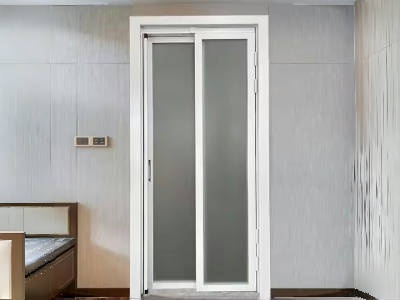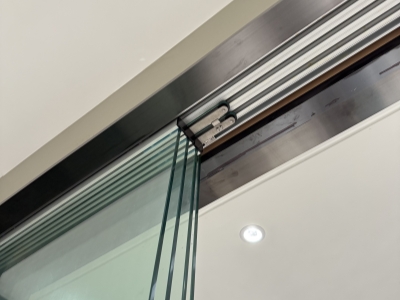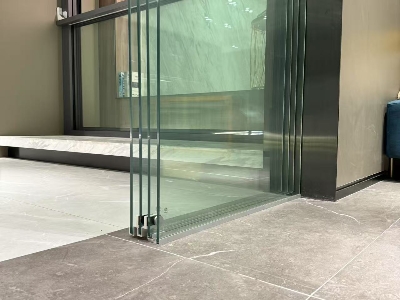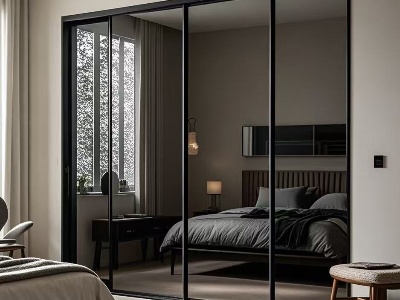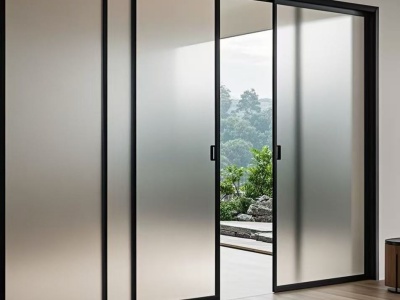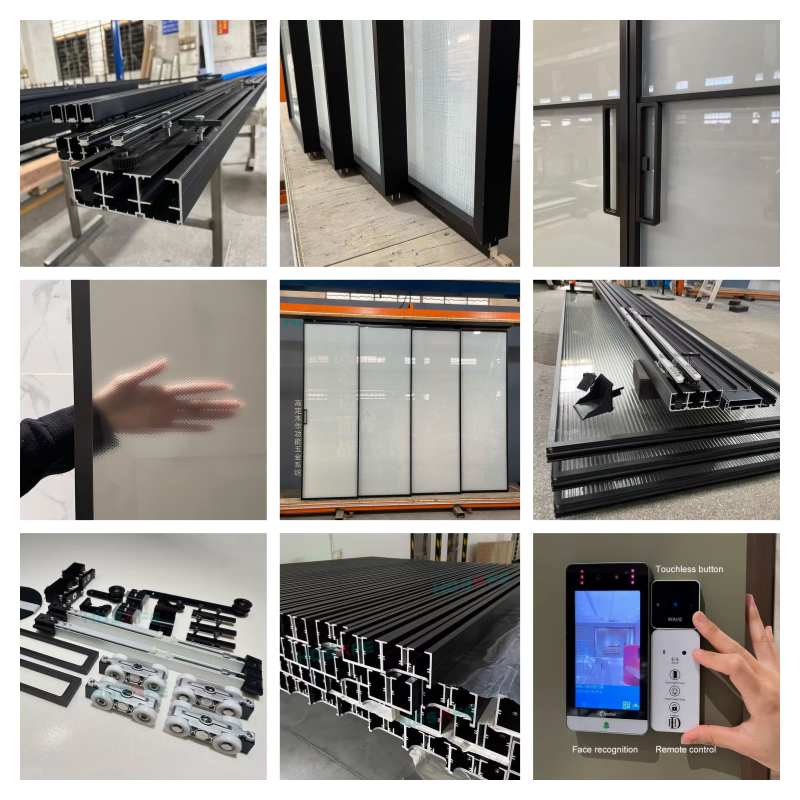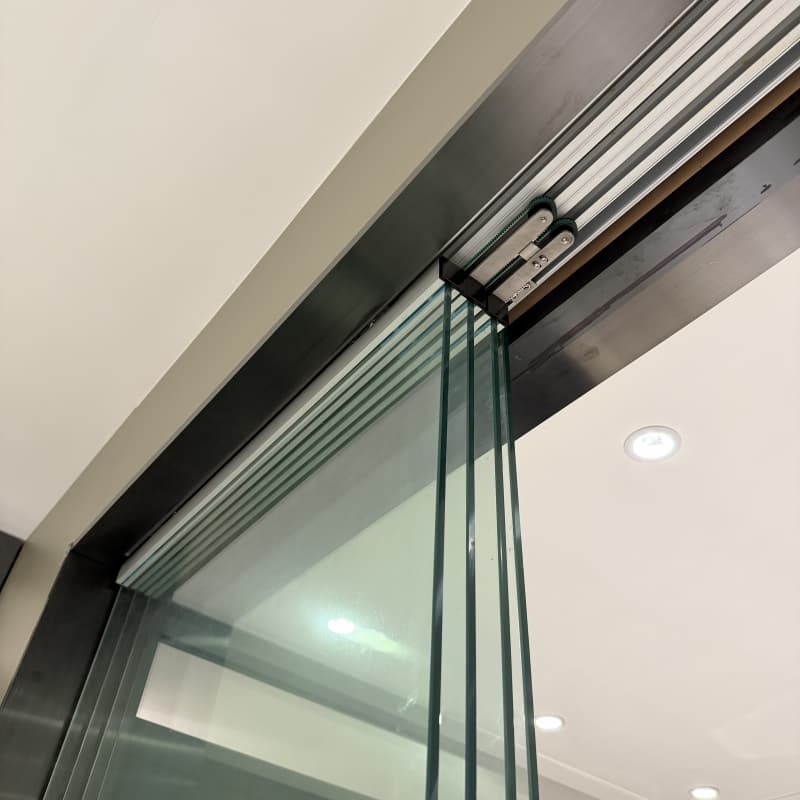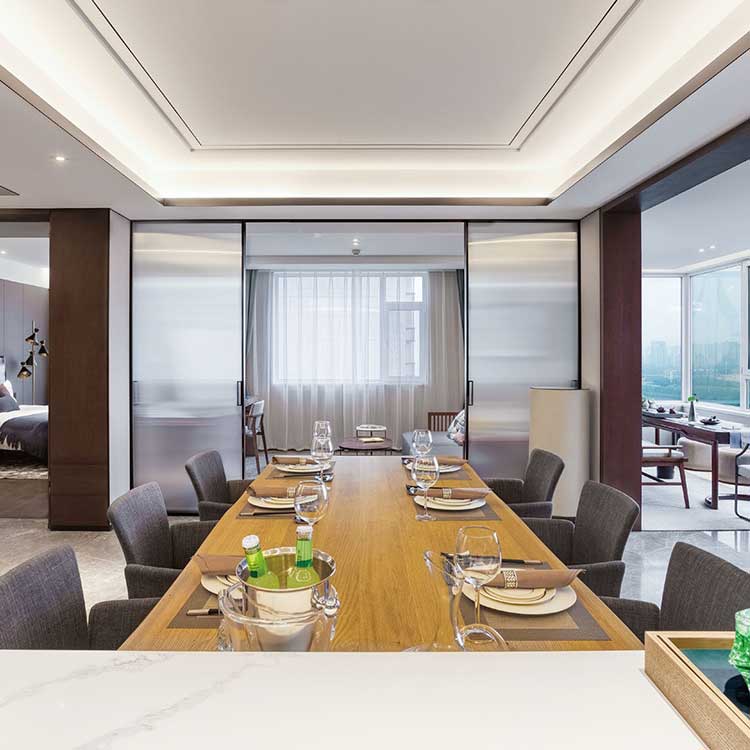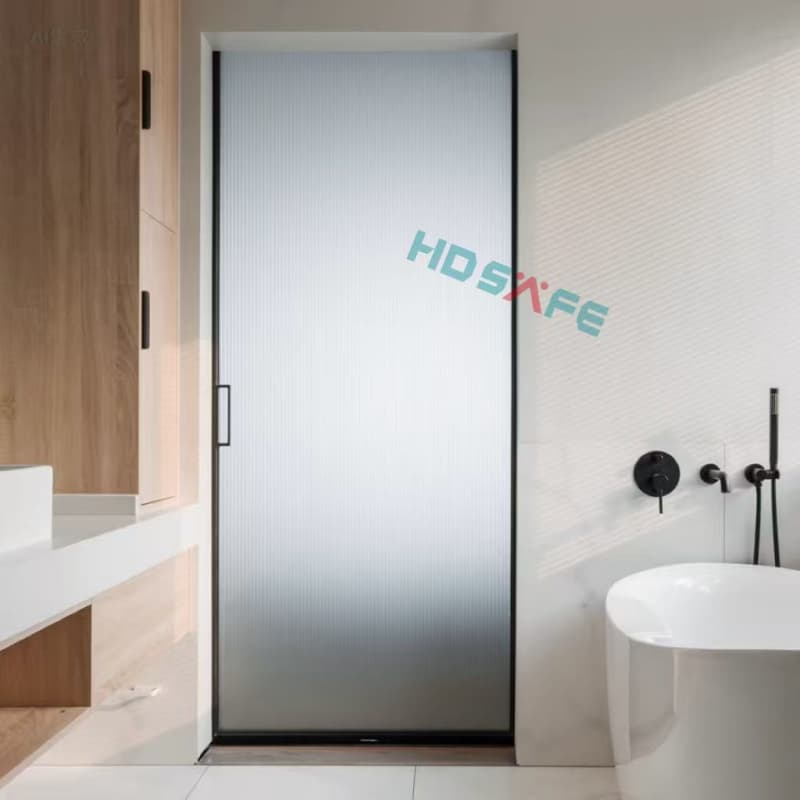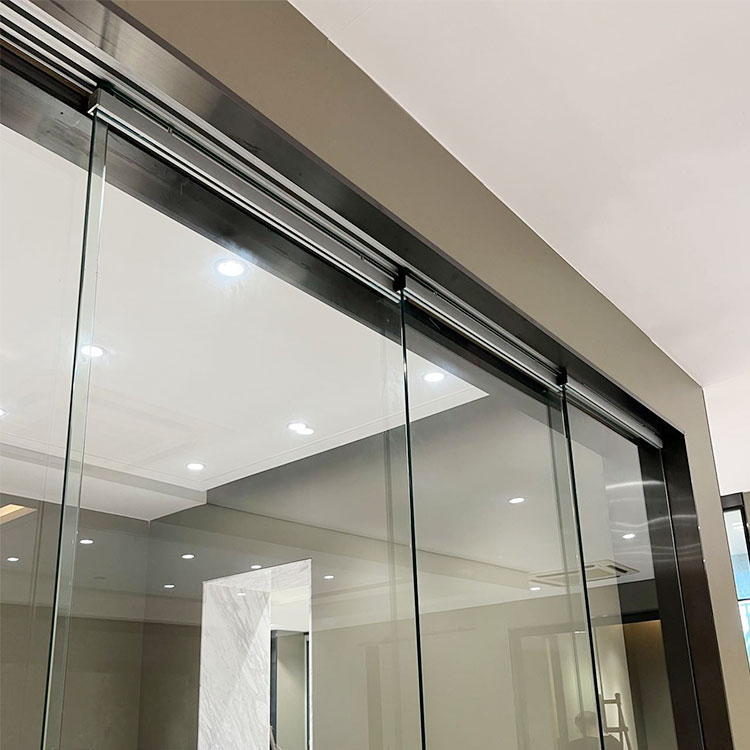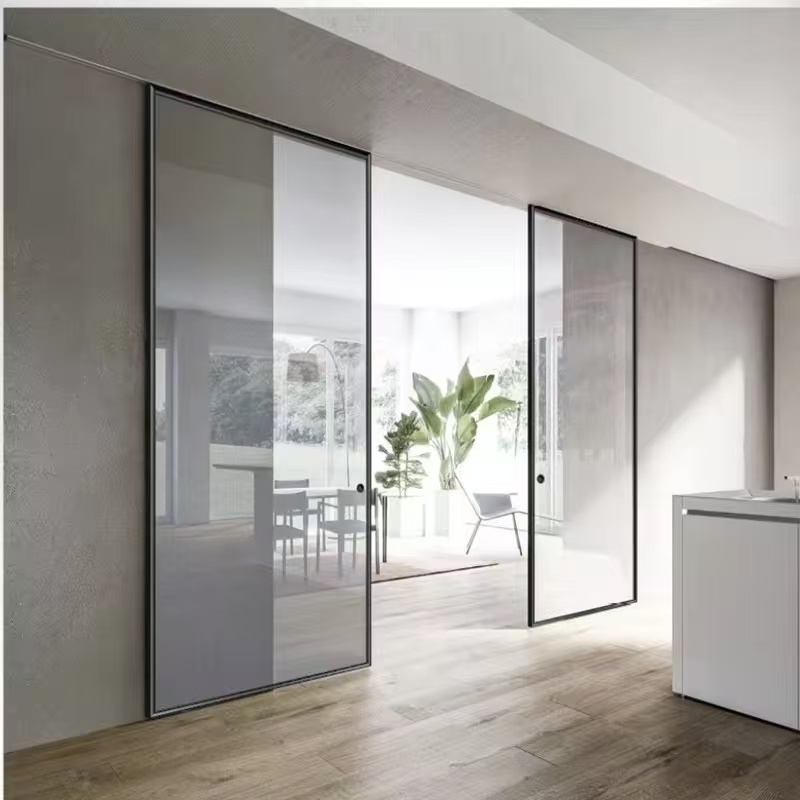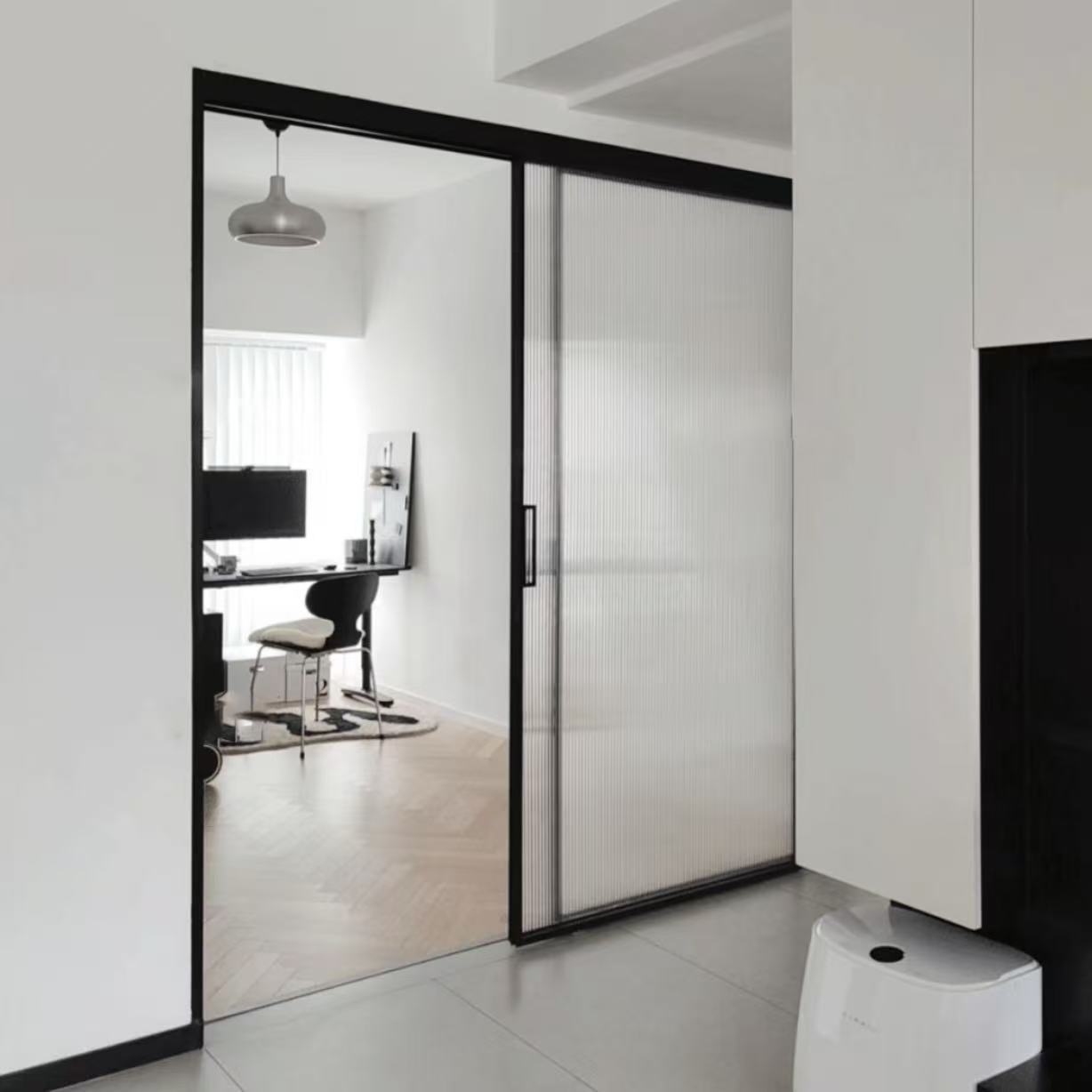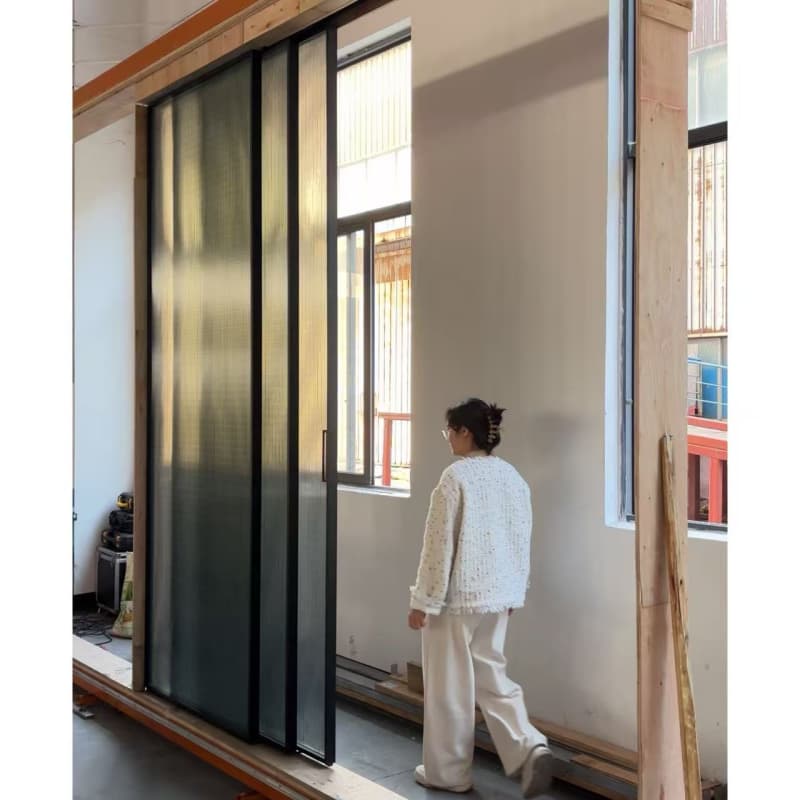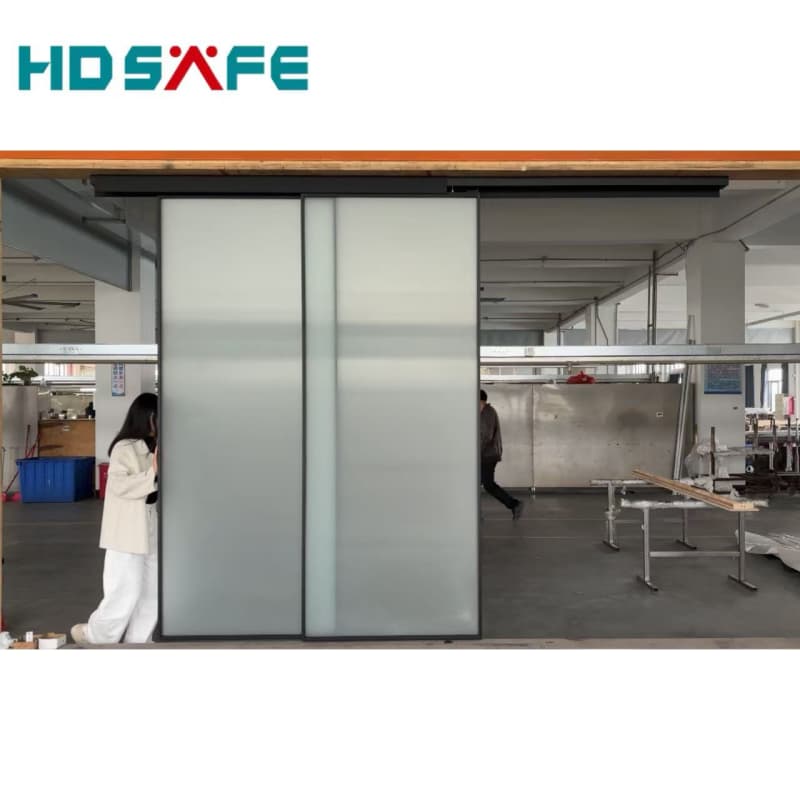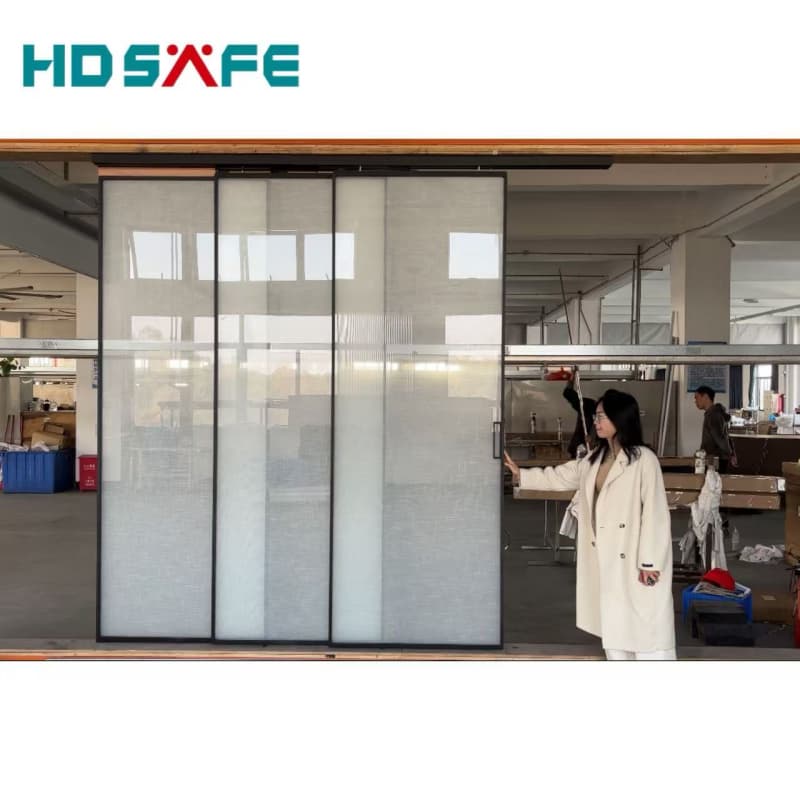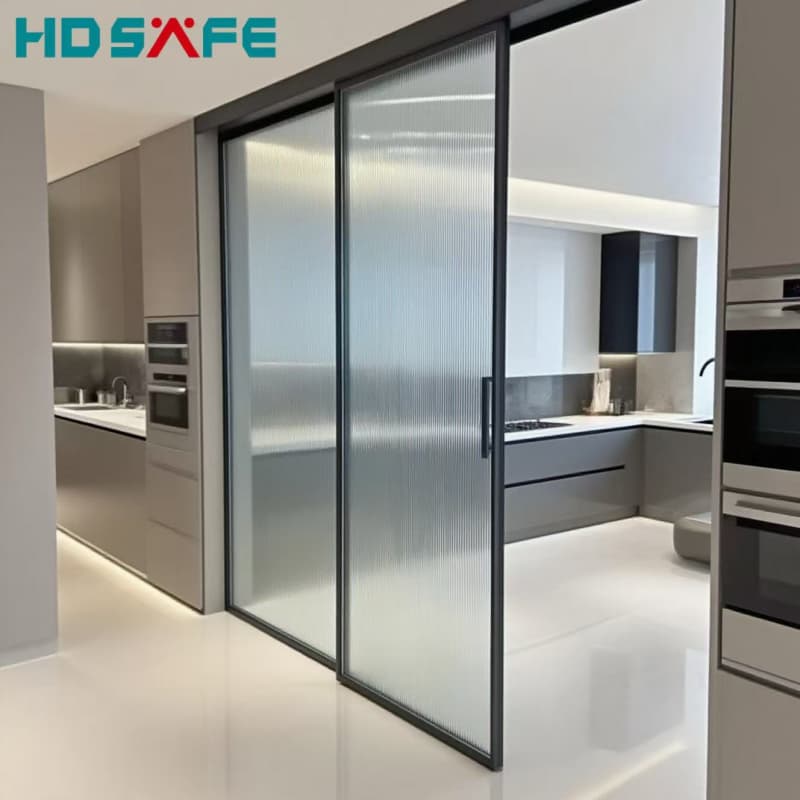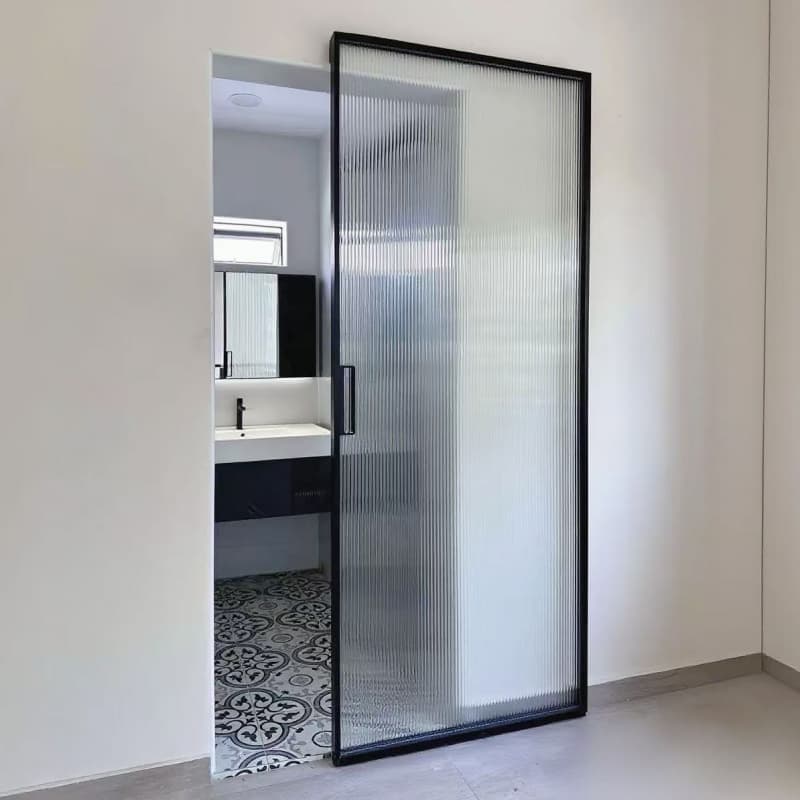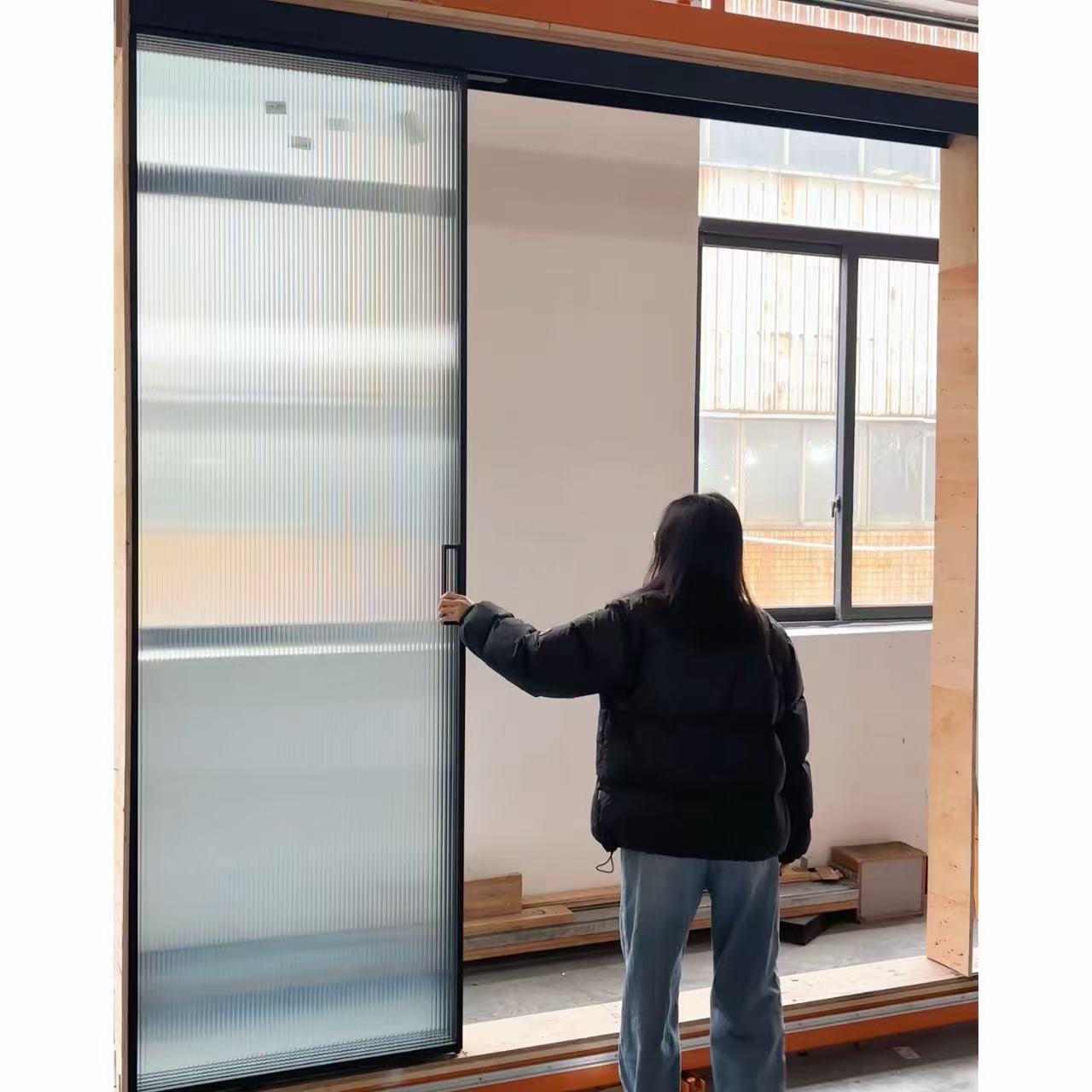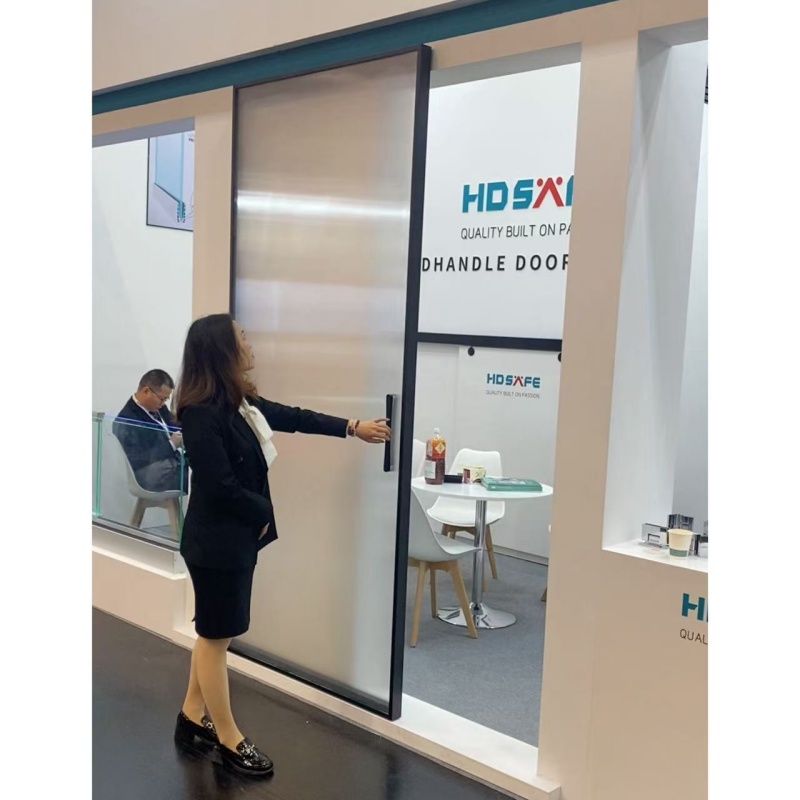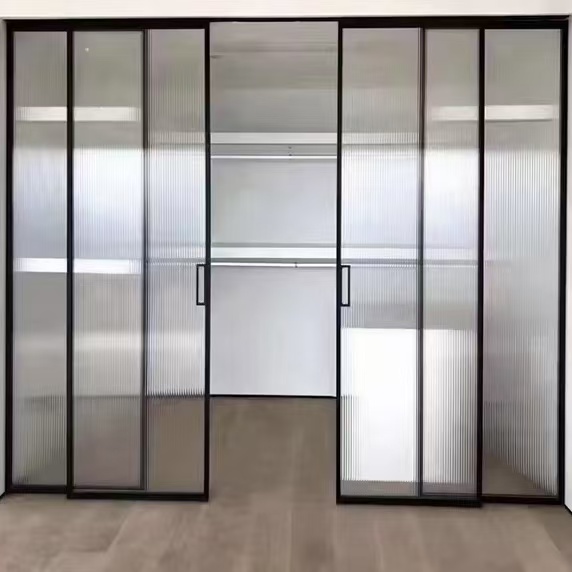Electric Glass Sliding Doors: A Comprehensive Guide
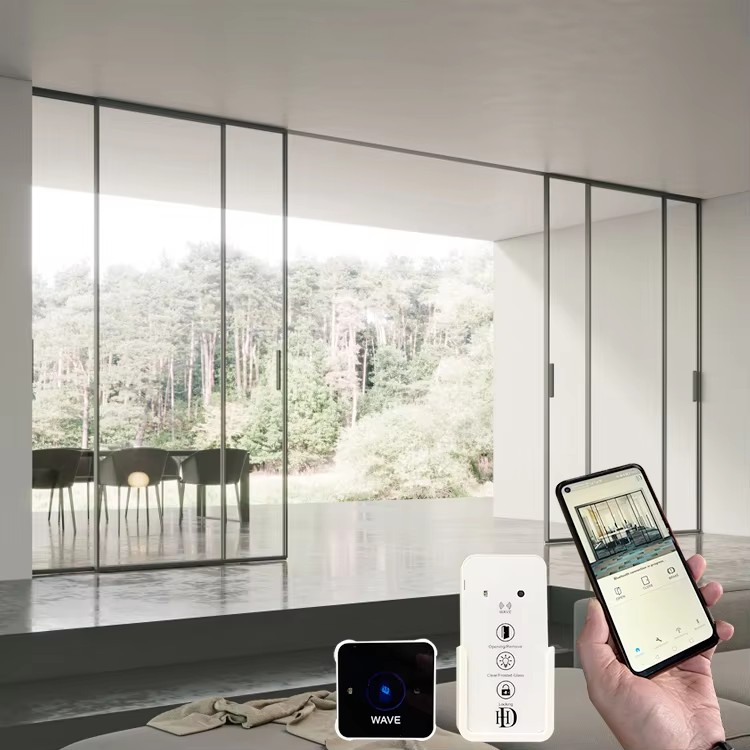
1. Introduction
Electric glass sliding doors have emerged as a sophisticated and practical solution in modern architecture and interior design. They seamlessly blend functionality, aesthetics, and technological innovation, catering to diverse applications ranging from residential homes to high - end commercial establishments. This article delves comprehensively into the world of electric glass sliding doors, exploring their design, functionality, benefits, installation, maintenance, and future trends.
2. Historical Development
The concept of sliding doors dates back centuries, with traditional wooden or metal sliding doors used in various cultures around the world. However, the advent of modern technology and materials has revolutionized the design and functionality of sliding doors, giving rise to electric glass sliding doors. In the early days, the development of these doors was driven by the need for more efficient and convenient ways to access large spaces in commercial buildings. As technology advanced, the integration of electric motors, sensors, and advanced glass materials further enhanced the performance and versatility of these doors, making them a popular choice in both residential and commercial settings.
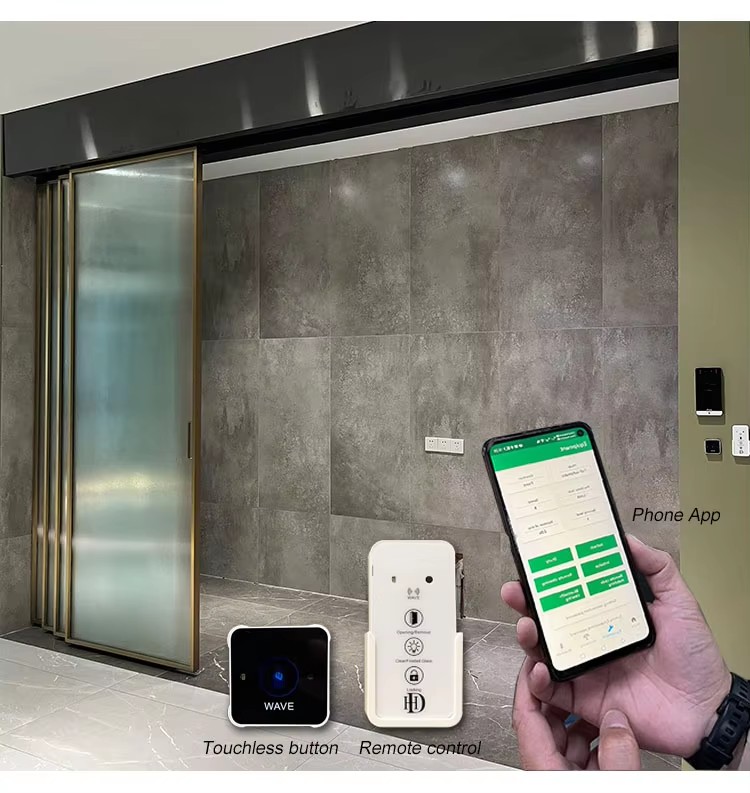
3. Design and Construction
3.1 Glass Types
Electric glass sliding doors can be made from a variety of glass types, each offering unique characteristics and benefits:
- Tempered Glass: Tempered glass is a type of safety glass that is four to five times stronger than regular glass. It is heat - treated to increase its strength and is designed to shatter into small, rounded pieces in the event of breakage, reducing the risk of injury. Tempered glass is widely used in electric glass sliding doors for its excellent strength and safety features.
- Laminated Glass: Laminated glass consists of two or more layers of glass with an interlayer of plastic, such as polyvinyl butyral (PVB) or ethylene - vinyl acetate (EVA). The interlayer holds the glass panes together even if the glass is broken, providing enhanced security and sound insulation. Laminated glass is often used in applications where safety and security are of utmost importance, such as in schools, hospitals, and government buildings.
- Insulated Glass: Insulated glass, also known as double - or triple - pane glass, consists of two or more glass panes separated by a sealed air or gas - filled space. This design significantly reduces heat transfer between the inside and outside of a building, improving energy efficiency. Insulated glass is a popular choice for electric glass sliding doors in residential and commercial buildings, as it helps to reduce heating and cooling costs.
- Tinted Glass: Tinted glass is treated with a special coating or film to reduce the amount of sunlight and heat that passes through it. Tinted electric glass sliding doors can provide privacy, reduce glare, and improve energy efficiency by blocking out unwanted solar radiation.
- Frosted Glass: Frosted glass is a type of decorative glass that has a textured surface, which diffuses light and provides privacy. Frosted electric glass sliding doors are often used in bathrooms, bedrooms, and other areas where privacy is desired.
3.2 Frame Materials
The frame of an electric glass sliding door plays a crucial role in providing structural support and enhancing the overall appearance of the door. Common frame materials include:
- Aluminum: Aluminum is a lightweight, durable, and corrosion - resistant material that is widely used in the construction of electric glass sliding doors. Aluminum frames can be easily customized in various colors and finishes to match the overall design of a building. Additionally, aluminum frames have good thermal conductivity, which can help to improve the energy efficiency of the door when used in conjunction with insulated glass.
- Steel: Steel frames are strong and durable, making them suitable for heavy - duty applications. They can provide excellent support for large and heavy glass panels. However, steel frames are more prone to rust and corrosion, so they often require protective coatings to ensure their longevity.
- Wood: Wood frames offer a natural and warm aesthetic appeal, making them a popular choice for residential applications. They can be stained or painted to match the interior design of a home. However, wood frames are more susceptible to warping, moisture damage, and insect infestation, so proper maintenance is required.
3.3 Track and Roller Systems
The track and roller system of an electric glass sliding door is responsible for guiding the movement of the glass panels smoothly and evenly. The tracks can be made of aluminum or stainless steel and are typically installed on the top and/or bottom of the door frame. The rollers, which are attached to the bottom of the glass panels, roll along the tracks to facilitate the sliding motion. There are different types of roller systems available, including ball - bearing rollers and wheel - type rollers. Ball - bearing rollers offer smooth and quiet operation and are more durable compared to wheel - type rollers.
3.4 Electric Motor and Control Systems
The electric motor is the heart of an electric glass sliding door, providing the power required to move the glass panels. There are different types of electric motors available, including geared motors and belt - driven motors. Geared motors are more compact and powerful, suitable for heavy - duty applications. Belt - driven motors offer smooth and quiet operation and are commonly used in residential and light - commercial applications.
The control system of an electric glass sliding door is used to operate the motor and control the movement of the glass panels. It can include wall - mounted buttons, remote controls, motion sensors, keypads, and smart home integration. Motion sensors are commonly used to automatically open and close the door when a person approaches or leaves the doorway. Smart home integration allows users to control the electric glass sliding door through a smartphone app or a voice - activated assistant, providing greater convenience and flexibility.
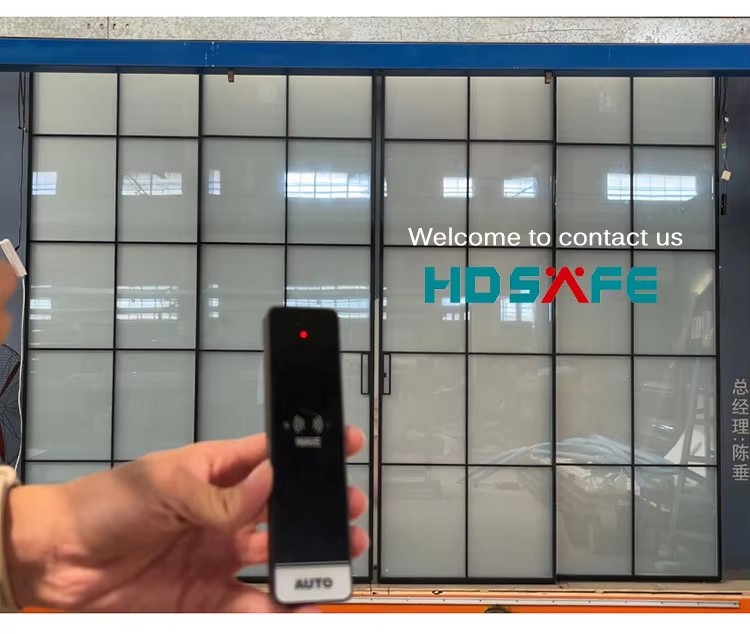
4. Functions and Features
4.1 Smooth and Quiet Operation
One of the key features of electric glass sliding doors is their smooth and quiet operation. The combination of a high - quality electric motor, advanced track and roller systems, and well - designed frames ensures that the door moves smoothly and quietly, without any jarring or squeaking sounds. This creates a comfortable and pleasant environment for users and also helps to reduce noise pollution in the surrounding area.
4.2 Automatic Opening and Closing
Most electric glass sliding doors are equipped with automatic opening and closing functions, which can be activated by motion sensors, remote controls, wall - mounted buttons, or smart home systems. Automatic opening and closing functions provide convenience and accessibility, especially for people with disabilities, the elderly, or those carrying heavy loads. The motion sensors can detect the presence of a person approaching the doorway and automatically open the door, making it easy to enter or exit the building.
4.3 Safety Features
Safety is a top priority in the design and construction of electric glass sliding doors. Many electric glass sliding doors are equipped with advanced safety features to prevent accidents and injuries. These features may include:
- Obstacle Detection Sensors: Obstacle detection sensors can detect the presence of an obstacle in the path of the door during the closing process. If an obstacle is detected, the door will automatically reverse its direction and reopen, preventing the door from pinning or crushing a person or an object.
- Emergency Stop Buttons: Emergency stop buttons are installed on the frame of the door, allowing users to stop the door immediately in case of an emergency.
- Safety Edges: Safety edges are soft and flexible strips installed on the edges of the glass panels and frames. When the safety edges come into contact with an obstacle, they trigger the obstacle detection sensors, causing the door to stop and reverse its direction.
- Locking Mechanisms: Electric glass sliding doors are equipped with reliable locking mechanisms to ensure the security of the building. The locking mechanisms can be activated and deactivated using the control system, and some doors also offer remote locking and unlocking functions.
4.4 Customization Options
Electric glass sliding doors offer a wide range of customization options to suit the specific needs and preferences of users. The glass panels can be customized in terms of size, shape, thickness, and type of glass. The frames can be customized in terms of color, finish, and material. The control system and safety features can also be customized to meet the specific requirements of the installation. Customization options allow users to create a unique and personalized electric glass sliding door that matches the overall design and functionality of their space.
4.5 Energy Efficiency
Electric glass sliding doors can contribute to the energy efficiency of a building by reducing heat transfer and improving insulation. Insulated glass panels, which consist of multiple glass panes separated by a sealed air or gas - filled space, can significantly reduce heat loss in winter and heat gain in summer. This helps to lower heating and cooling costs and improve the overall comfort of the building. Additionally, some electric glass sliding doors are designed with weather - stripping and seals to further enhance their energy - saving capabilities.
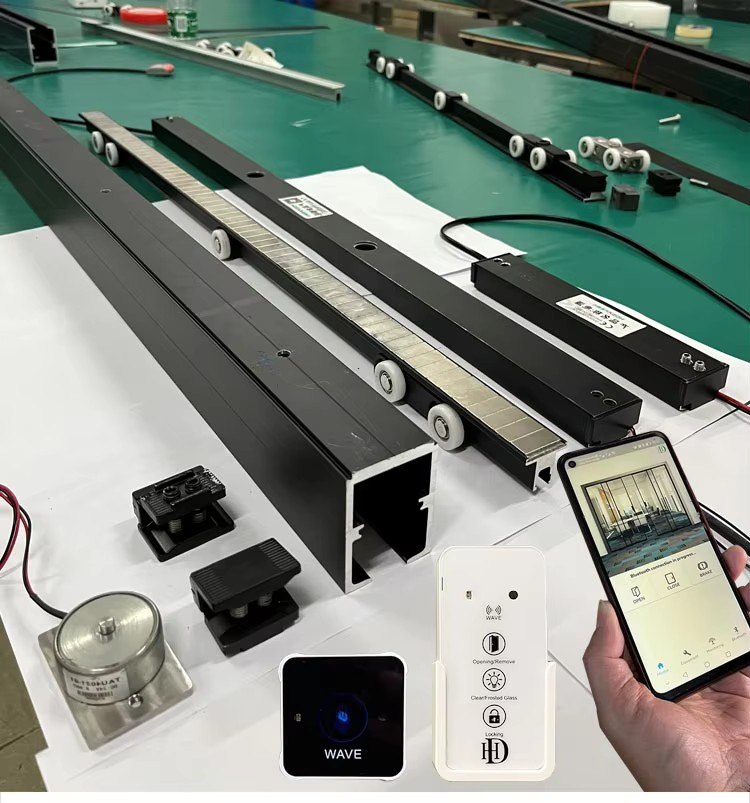
5. Installation Process
5.1 Site Preparation
The first step in the installation of an electric glass sliding door is site preparation. This involves clearing the area where the door will be installed and ensuring that the floor is level and clean. Any obstacles or debris in the installation area should be removed to ensure a smooth and successful installation. The door frame should be carefully measured and marked on the wall or floor to ensure accurate installation.
5.2 Frame Installation
The next step is the installation of the door frame. The frame should be installed securely on the wall or floor using appropriate fasteners and anchors. The frame should be level and plumb to ensure proper operation of the door. The tracks for the door should be installed on the top and/or bottom of the frame, and the rollers should be attached to the bottom of the glass panels.
5.3 Glass Panel Installation
Once the frame and tracks are installed, the glass panels can be installed. The glass panels should be carefully lifted and placed into the frame, ensuring that they are properly aligned with the tracks. The glass panels should be secured in place using screws or clips, and any gaps between the glass panels and the frame should be sealed with weather - stripping or silicone sealant.
5.4 Motor and Control System Installation
The electric motor and control system should be installed according to the manufacturer's instructions. The motor should be connected to the frame and the tracks, and the wiring should be properly routed and connected to the control panel. The control system, including motion sensors, remote controls, and wall - mounted buttons, should be installed and programmed according to the user's requirements.
5.5 Testing and Adjustment
After the installation is complete, the door should be tested to ensure proper operation. The door should be opened and closed several times to check for smooth operation, proper alignment, and accurate obstacle detection. Any adjustments or modifications should be made as necessary to ensure the safe and efficient operation of the door.
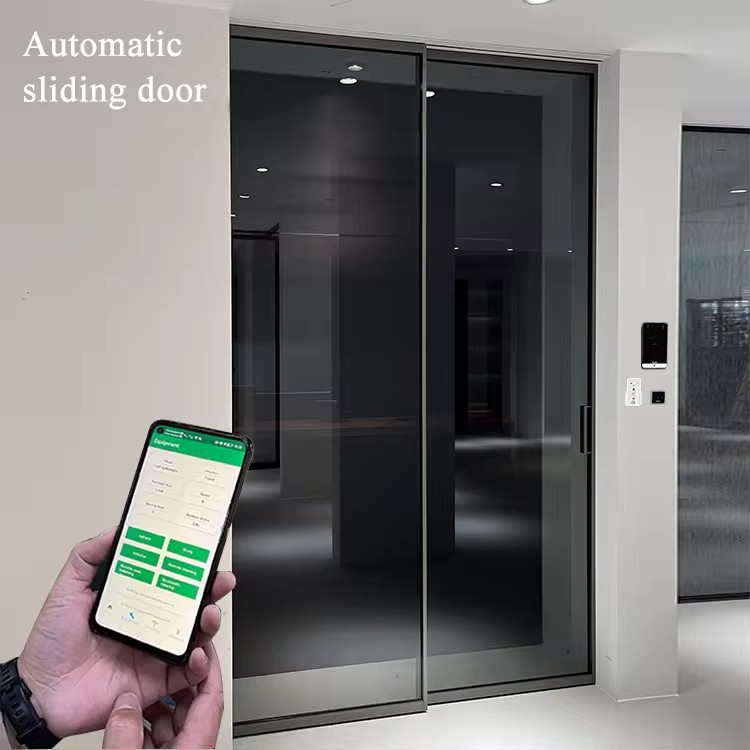
6. Maintenance and Care
6.1 Cleaning the Glass
The glass panels of an electric glass sliding door should be cleaned regularly to maintain their clarity and appearance. A mild detergent and water solution can be used to clean the glass, and a soft cloth or sponge should be used to avoid scratching the surface. For tougher stains or smudges, a glass cleaner specifically designed for tempered or laminated glass can be used. Avoid using abrasive materials or harsh chemicals that can damage the glass.
6.2 Lubricating the Tracks and Rollers
The tracks and rollers of an electric glass sliding door should be lubricated regularly to ensure smooth operation. A silicone - based lubricant can be applied to the tracks and rollers using a small brush or cloth. Lubrication should be done every few months or as needed, depending on the frequency of use of the door.
6.3 Inspecting the Door and Components
Regular inspection of the electric glass sliding door and its components is essential to identify and address any potential issues before they become major problems. The frame should be checked for any signs of damage, such as cracks or loose screws. The glass panels should be inspected for any chips, cracks, or scratches. The tracks and rollers should be checked for proper alignment and lubrication, and the motor and control system should be inspected for any signs of wear or malfunction.
6.4 Replacing Worn or Damaged Components
If any components of the electric glass sliding door are found to be worn or damaged during the inspection, they should be replaced promptly. This includes replacing worn rollers, damaged glass panels, or malfunctioning motors. It is recommended to use high - quality replacement parts from the manufacturer or a reputable supplier to ensure the continued performance and safety of the door.
7. Applications in Different Settings
7.1 Residential Applications
In residential settings, electric glass sliding doors are commonly used in entrances, patios, balconies, and room partitions. In entranceways, they provide a convenient and elegant way to enter and exit the home while also enhancing the curb appeal. In patios and balconies, they can create a seamless connection between the indoor and outdoor spaces, allowing residents to enjoy the fresh air and natural light. As room partitions, they can divide large open spaces into smaller, more functional areas while still maintaining a sense of openness.
7.2 Commercial Applications
Electric glass sliding doors are widely used in commercial settings such as offices, hotels, shopping malls, and hospitals. In offices, they can be used to divide different departments or work areas, providing privacy and reducing noise pollution. In hotels, they can be used as entrances to guest rooms or public areas, offering a modern and luxurious look. Shopping malls often use large electric glass sliding doors to create a grand entrance and to facilitate the flow of customers. In hospitals, they can be used in operating rooms, patient rooms, and other areas where cleanliness and hygiene are of utmost importance.
7.3 Industrial Applications
In industrial settings, electric glass sliding doors are used in warehouses, factories, and laboratories. In warehouses, they can be used to provide easy access to storage areas and to improve the efficiency of material handling. In factories, they can be used to separate different production areas and to control the flow of air and ventilation. Laboratories may use electric glass sliding doors to maintain a clean and controlled environment and to prevent the spread of contaminants.

8. Future Trends
8.1 Integration with Smart Home Technology
The integration of electric glass sliding doors with smart home technology is expected to become more prevalent in the future. Smart home systems will allow users to control the door remotely using their smartphones or voice - activated assistants. This will provide greater convenience and flexibility, allowing users to open and close the door even when they are not at home. Smart home systems can also be programmed to automatically open and close the door based on certain conditions, such as the presence of a person or the time of day.
8.2 Use of Advanced Materials and Technologies
The development of advanced materials and technologies is likely to lead to further improvements in the performance and functionality of electric glass sliding doors. For example, the use of smart glass that can change its transparency or tint based on the lighting conditions or user preferences is becoming more common. Additionally, the integration of solar panels into the door frames or glass panels can provide a sustainable energy source for the door's motor and control system.
8.3 Enhanced Safety and Security Features
The demand for enhanced safety and security features in electric glass sliding doors is expected to continue to grow. Future doors may be equipped with more advanced obstacle detection sensors, biometric authentication systems, and anti - theft mechanisms. These features will further enhance the safety and security of the door and the building it is protecting.
8.4 Sustainability and Energy Efficiency
As the focus on sustainability and energy efficiency increases, electric glass sliding doors will be designed and manufactured with a greater emphasis on reducing their environmental impact. This may include the use of recycled materials, low - energy - consuming motors, and advanced insulation techniques. The development of doors that can generate their own energy through solar power or other renewable energy sources will also contribute to a more sustainable future.
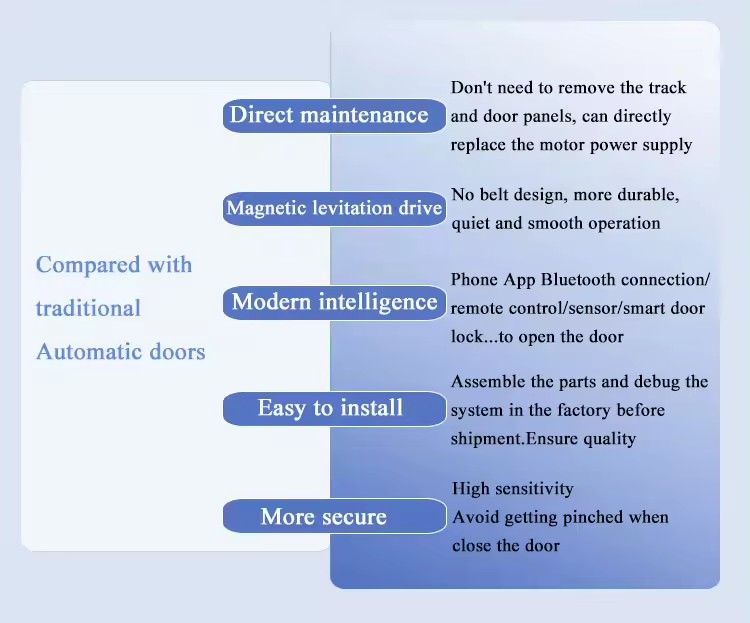
9. Conclusion
Electric glass sliding doors are a versatile and practical solution that combines functionality, aesthetics, and technological innovation. They offer numerous benefits, including smooth and quiet operation, automatic opening and closing, enhanced safety features, and energy efficiency. With a wide range of customization options, they can be tailored to meet the specific needs and preferences of different users in various settings, from residential homes to commercial buildings and industrial facilities. As technology continues to evolve, the future of electric glass sliding doors looks promising, with new advancements in materials, design, and functionality on the horizon. By understanding the features, installation process, maintenance requirements, and future trends of electric glass sliding doors, users can make informed decisions and enjoy the many benefits that these doors have to offer.





 Home
Home May 19,2025
May 19,2025 
 The Evolution and Functionality of Automatic Sliding Doors: A Comprehensive Guide
The Evolution and Functionality of Automatic Sliding Doors: A Comprehensive Guide 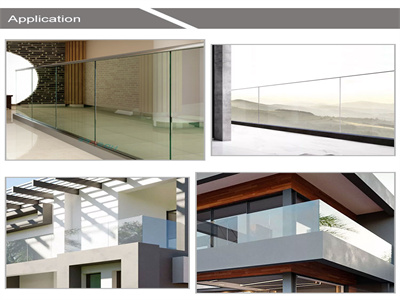
 Mar 25,2025
Mar 25,2025 
